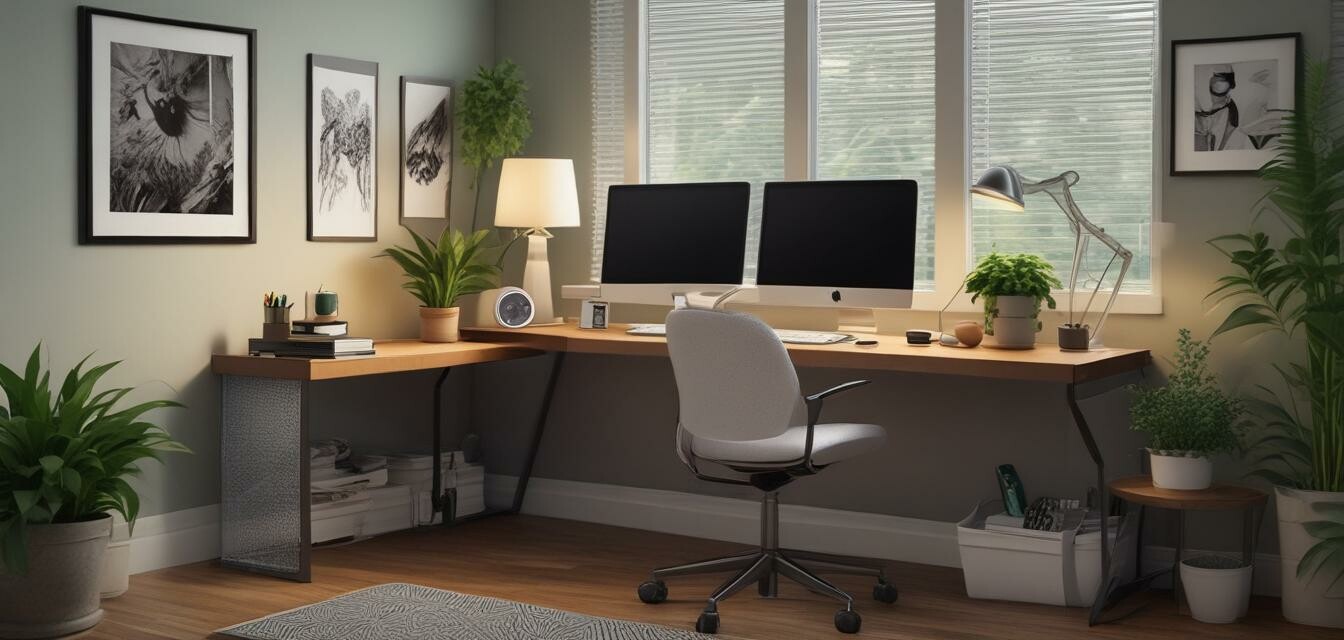
How to Create a Healthy Workspace in Your Home
Key Takeaways
- A well-organized physical space boosts productivity.
- Ergonomic furniture helps prevent physical strain.
- Incorporating plants can enhance creativity and air quality.
- Good lighting is crucial for reducing eye strain.
- A clutter-free workspace promotes mental clarity.
Creating a healthy workspace in your home is essential to boosting productivity and enhancing your overall well-being. In this guide, we will share practical tips and tricks to set up an ideal workspace that not only looks good but also promotes health benefits. From adjustable desks to proper lighting, let's dive into creating a workspace that caters to your needs.
The importance of a healthy workspace
The workspace you create directly impacts your efficiency and health. With more people working from home, it's critical to cultivate an environment that supports productivity while maintaining physical and mental health. Investing in ergonomic furniture, ensuring adequate lighting, and managing clutter can transform your work experience.
Essential elements for a healthy workspace
| Element | Benefits |
|---|---|
| Ergonomic chair | Reduces back pain and promotes good posture. |
| Adjustable desk | Encourages changing positions, minimizing fatigue. |
| Proper lighting | Prevents eye strain and enhances focus. |
| Plants | Boosts mood and purifies air quality. |
| Multi-monitor setup | Improves productivity and provides more workspace. |
Creating an ergonomic setup
When setting up your home office, focus on creating an ergonomic environment. Here are some tips:
- Choose a chair that supports your lower back.
- Keep your feet flat on the floor or use a footrest.
- Position your monitor at eye level to minimize neck strain.
- Consider desk height to allow for comfortable arm positioning.
For more in-depth information on ergonomic solutions, check out our Ergonomic Accessories page.
Optimizing lighting for better focus
Good lighting is vital for a healthy workspace. Insufficient or harsh lighting can lead to eye strain and headaches. Consider these lighting tips:
- Utilize natural light wherever possible.
- Incorporate desk lamps with adjustable brightness.
- Choose warm lighting to create a cozy atmosphere.
- Avoid glare by positioning screens away from windows.
Incorporating nature into your workspace
Adding plants to your office can significantly enhance your environment. Consider these benefits:
- Plants can increase creativity and reduce stress.
- They improve air quality by filtering toxins.
- Low-maintenance plants such as succulents are perfect for busy schedules.
Explore our collection of Cool Gadgets that complement your workspace while also bringing a touch of nature indoors.
Minimizing clutter for mental clarity
A cluttered workspace can lead to distractions and decreased focus. Here are steps to maintain an organized space:
- Use storage solutions like drawers and file organizers.
- Keep only necessary items on your desk.
- Implement a cleaning routine to maintain an organized area.
- Utilize cable management systems to keep cords tidy.
Conclusion
Creating a healthy workspace in your home is a blend of ergonomic furniture, proper lighting, natural elements, and organized spaces. Design your workspace with these components in mind to cultivate a productive atmosphere that supports your health. Remember, a thoughtful approach to your environment can significantly enhance your working experience.
Tips for beginners
- Start small by upgrading one element at a time.
- Experiment with different layouts to find what works for you.
- Seek inspiration from home office setups online.
- Always prioritize comfort alongside functionality.
Pros
- Increases productivity and focus.
- Enhances creativity and reduces stress.
- Promotes better physical health and wellness.
Cons
- Can require a significant initial investment.
- May take time to design the perfect setup.